When the Germans lost town after town, evacuated their factories and fled to the west in panic, it seemed that hell would end soon. Many of those who thought so were yet to find out what the abyss looks like. And it was [buybox-widget category ="book" ean ="9788308068571" popover-event ="hover"] Soviet gulag in Poland [/ buybox-widget].
In this respect, historical education in our country is severely lame. Young Poles do not learn that the hell of concentration camps and forced labor did not end with the expulsion of the German invader. The former sites of extermination and exploitation began to function again in the last months of the war, and in the years 1945-1950 there were already 206 camps in Poland. The invading Soviet troops smoothly took over the infrastructure used by the Nazis and, together with the UB, resulted in the deaths of around 25,000 prisoners (as we wrote recently).
If anyone had hoped that in the new circumstances the prisoners (Germans, Silesians, Poles, Ukrainians, Lemkos ...) would be treated clearly better than by the Nazis, he was wrong.
Scraps of information were reaching the West, which caused great anxiety anyway. On May 21, 1945, Bishop Stanisław Adamski compared the situation of Soviet prisoners to those in the Gestapo camps in a letter to General Aleksander Zawadzki. Churchill thundered in the House of Commons that a massive tragedy was unfolding behind the Iron Curtain and that the Red Cross was sending representatives. Allied charity specialists, however, were not allowed anywhere near any camp. What was behind their gates is terrifying to this day. Below are the worst of the worst places in retreat, including a new book entitled "The Gulag on the Vistula".
Nowiny-Błudek
The Red Army was coming from the east, so necessarily the first camps were set up in the vicinity of Lublin. Among them was the one in Nowiny-Błudek, in the Zamość poviat. He was subordinate to the Polish authorities only in matters of living and protection. Everything else was up to the Soviets.
The camp in Nowiny was organized in October 1944. An army unit came to the local forester's lodge. He installed himself in the building, and then began logging forest and building residential barracks. Three makeshift buildings were erected, and then the area in the shape of a rectangle, 200 by 150 meters, was fenced off. The fence was 3.5 meters high and covered with barbed wire. Soon after, prisoners began to be delivered.
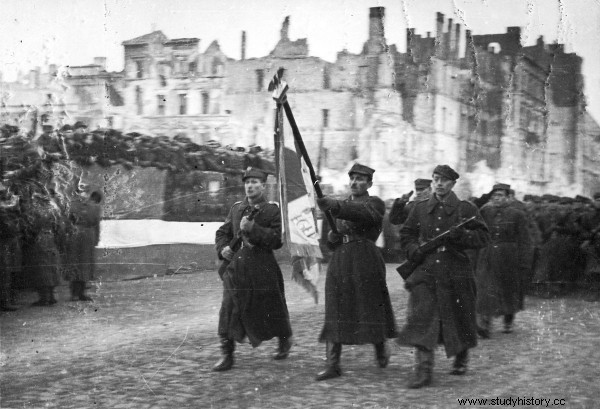
The parade of the First Polish Army on Marszałkowska Street in the captured Warsaw on January 19, 1945. The Poles entered the country with the victorious army. Even though they were at home, they had nothing to say. And when they talked too much, they ended up in camps with others.
The first transports arrived in the fall. People ended up in poorly assembled barracks, covered with a roof made of thin boards, with bunks missing. Not only that:there was not even a floor in them. The prisoners slept on pine branches, right on the dirt floor. The sick were also kept under these conditions. Their clothes were rags, they were not allowed to cover their heads:neither in summer, when the sun was scorching, nor in winter, when the temperature dropped to minus 30 degrees. For some, a paper sack had to be enough to get dressed.
The guards persuaded the locals that there were Germans and traitors who cooperated with them in the camp, but the local population recognized Polish uniforms and noticed that the prisoners spoke their language. Thus, the guards began to announce that it was a Volksdeutsche, but the Home Army kept the outpost under close scrutiny. What the scouts saw was appalling.
The prisoners were starved - they worked hard physically, receiving two meager meals. In the morning it was a piece of bread and coffee, after work a thin soup. Many were so exhausted that they had to be brought to the camp after a whole day. Then, as Krzysztof A. Tochman describes it in the article "Komunistyczny labor camp Nowiny-Błudek in the Zamojszczyzna (1944-1945)":
On the way back, comrades of misery had to carry exhausted condemned. After arriving at the camp, they were placed on the assembly square. At that time, the remaining groups were lining up in two rows. During the 'head' speech, prisoners were warned that if they did not work efficiently, they would face severe punishment. At that time, in front of all the exhausted prisoners, they were killed with firearms or murdered with clubs, saying that even a bullet is a pity for the Polish bandits.
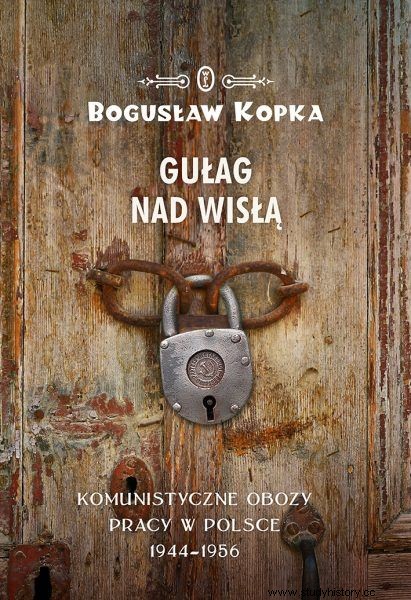
The torture of prisoners was the order of the day. The guards even tormented those who had just been brought from the Lublin Castle after many days or weeks of torture. Their behavior was so brutal that some of the crew simply couldn't look at them. As reported by the Home Army intelligence officer who made contact with this part, even the servants did not understand how a Pole could treat another Pole in this way. Apart from the Soviet commander and one Jew, all the rest of the beast were Poles.
Finally, on the night of March 25/26, 1945, the Home Army set up the camp. Unfortunately, the inmates could not be saved. Earlier in the evening, they were led towards the train station. The partisans only caught up with the commandant's office and the torturers. Nowiny camp showed on a micro scale the monstrous modus operandi communist system of repression. Soon the torturers from the NKVD and the UB were to spread their wings.
Łambinowice
The people around Lamsdorf were used to having a camp at their home. Prisoners of war were kept here practically forever:during the Franco-Prussian war and both world wars. In 1945, however, history turned around. From then on, the inhabitants of these parts were to watch the world from behind the barbed wire. Now the town was called Łambinowice, it was located in Poland, and a concentration camp for the Germans was established on its territory.
Mainly civilians and people suspected of belonging to the SS, SA, NSDAP, BDM, German prisoners of war returning from captivity, etc. were confined there.
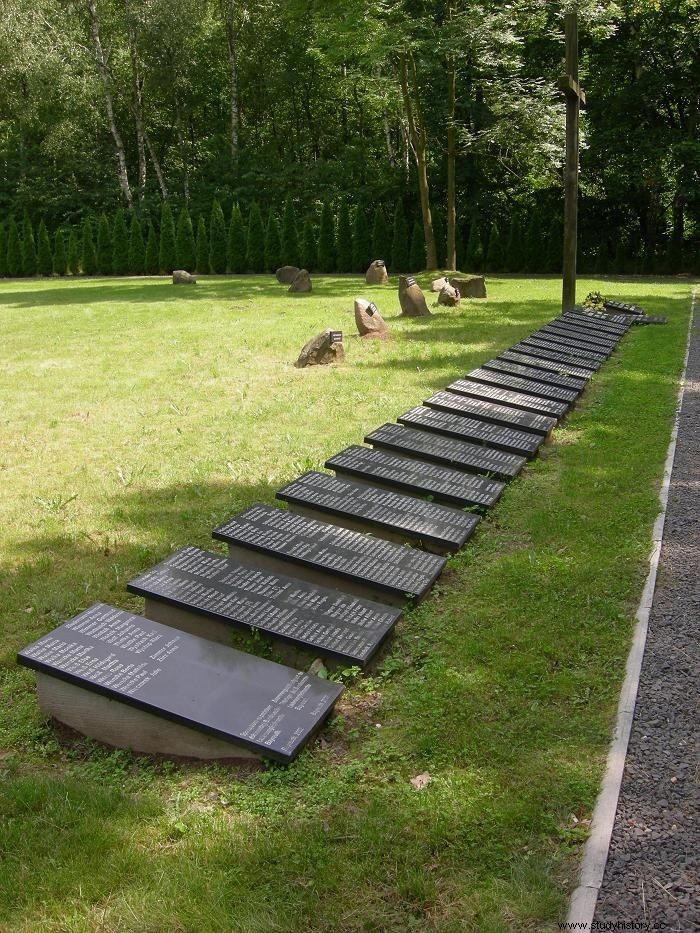
Labor camp cemetery in Łambinowice (photo:Jacques Lahitte, license CCA SA 3.0)
The indigenous people were thrown out of their homes and their families were relocated behind the wires, and Polish repatriates came to replace them. Officially, there were just over 2,000 prisoners in Łambinowice, of whom almost 36% died. The statistics kept secretly by a German camp doctor are completely different. According to them, 8,064 people were held in the camp, including 828 children, of whom 6,480 died. Before their lives were taken, they went through hell.
As Bogusław Kopka describes in the book "The Gułag nad Wisłą. Communist labor camps in Poland (1944-1956) ” :
On October 4, 1945, a fire broke out in the camp. On the orders of the then 20-year-old commander Czesław Gęborski, the camp guards used firearms, allegedly to prevent the prisoners from escaping. Forty-six or forty-eight people died. […]
It has also been established that the guards receive no remuneration for their work, living off the robbery of prisoners and the local population:"Drunkenness and rape are on the agenda in the camp." .
To put it bluntly:Gęborski burned dozens of people alive and, moreover, ordered shooting at all those who wanted to save them. The commandant later maintained that the shooting was to prevent possible escapes.
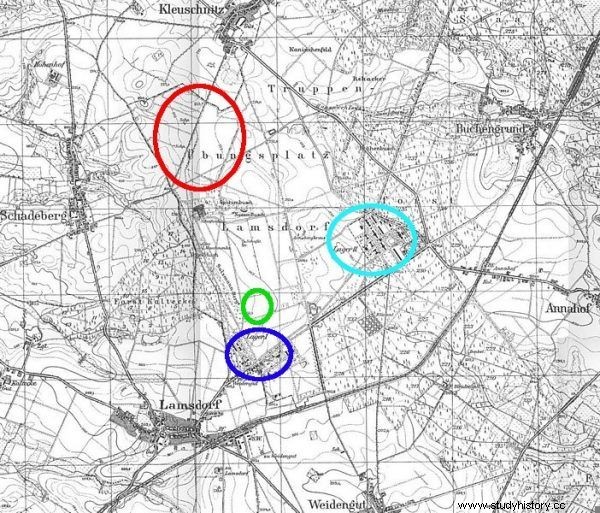
The vicinity of Łambinowice. The map shows the camps operating in this area in the years 1870-1946. Green color means a post-war labor camp (photo:public domain)
Dr. Ewald Stefan Pollok describes the monstrous treatment of prisoners in the article "Post-war Polish concentration camps". As we can read in his text, the guards ordered the men to put on German helmets, and then they were smashed with hammers and axes. Inmates were also forced to climb trees and shot at them as if they were moving targets, instructing other prisoners to ... cut down those trees at the same time.
During the gymnastics, the prisoners were ordered to lie down on the ground, and the torturers walked on them in heavy boots. As testified during the trial, a guard from Łambinowice, Erwin Kubon, out of twenty of the Germans brought to the camp, nine were killed, and the tenth was shot by the commander, Czesław Gęborski. The prisoners were tortured and starved. For breakfast they were given a liter of hot water and two potatoes, which were often rotten. Same for dinner.
People turned into skeletons. The children died of hunger, the hungry babies cried incessantly as long as they had enough strength. When they fell silent, it was known that they would never speak again. According to Pollock, there is a known case where a 2-year-old was shot for laying flowers on a mass grave into which her mother's body was thrown. Entire families died in the camp. Unable to bear the prisoners, they threw themselves on the wires under tension, or hanged themselves. As emphasized by Bogusław Kopka in the book "Gułag nad Wisłą. Communist labor camps in Poland (1944-1956) ” , Gęborski has never been punished. The prosecutor's office did not investigate his case until the nineties, but the case dragged on until 2005, when it was interrupted due to the defendant's poor health. In 2006, it was discontinued due to his death.
Świętochłowice-Zgoda
Each of the communist camps was terrifying in its own way, but the one in Świętochłowice enjoyed the worst fame. The UB and NKVD took over the post-Nazi infrastructure - barracks, a double high-voltage barbed wire fence, or a building for staff. The first detainees were sent to the camp in February 1945. The commanders were Salomon Morel and Aleksy Krut, but from June the first took over the undivided reign, and his reign for the prisoners meant a series of torment.

The living conditions were terrible. The inmates suffered a terrible hunger. The food included a ration of 125 grams of bread served twice a day. According to the data provided by the Auschwitz-Birkenau State Museum, it was even less than that received by KL Auschwitz prisoners. The detainees also received a portion of fodder beet soup. It got to the point that they began to feed on grass growing on the camp area, but soon this area became a completely stripped threshing floor. Although families tried to save prisoners with food parcels, the guards often ate them rather.
The hungry prisoners were getting weaker and weaker. They could not count on any comforts. They did not receive blankets, no mattresses, and no clothes. They only had the rags in which they came to Świętochłowice. The prisoners slept huddled three or four on a single bunk and struggled with the plague of lice, bedbugs and rats. These conditions became the ideal breeding ground for disease.
In the summer of 1945, a terrible typhus epidemic broke out. Several dozen people died a day. According to official data, the number of deaths in the camp is 1855. Unofficially, the number of deaths is estimated at over 500 more. Typhus and hunger weren't the only causes. Several people were shot while trying to escape, and the rest were tortured by guards. As Adam Dziurok writes in the article “For the German, for the Volkslist, for nothing. Labor camp in Świętochłowice ”, the worst tortures were experienced by young people suspected of belonging to Hitlerjugend and Bund Deutscher Mädel, i.e. Nazi organizations for boys and girls. The rest of the detainees were by no means reduced.
There was barracks no. 7 in the camp, called the brown barracks, intended for collaborators. Its tenants were tortured and cruelly tortured, although even several-year-old children were among them. They were not provided with food utensils. They had to eat from old cans, they remained in the camp from the time when the Germans were the guards and the Poles were inmates. When it came to beatings, they had to say for themselves how many times to be hit and then thank their tormentor with the words "Thank the Lord" - otherwise the beating would start all over again. One of the tortures was throwing prisoners into a prison, where they had to stand, exhausted, in water that reached their chest or neck. In many cases it ended in death - not having the strength to stand still, they staggered and drowned.
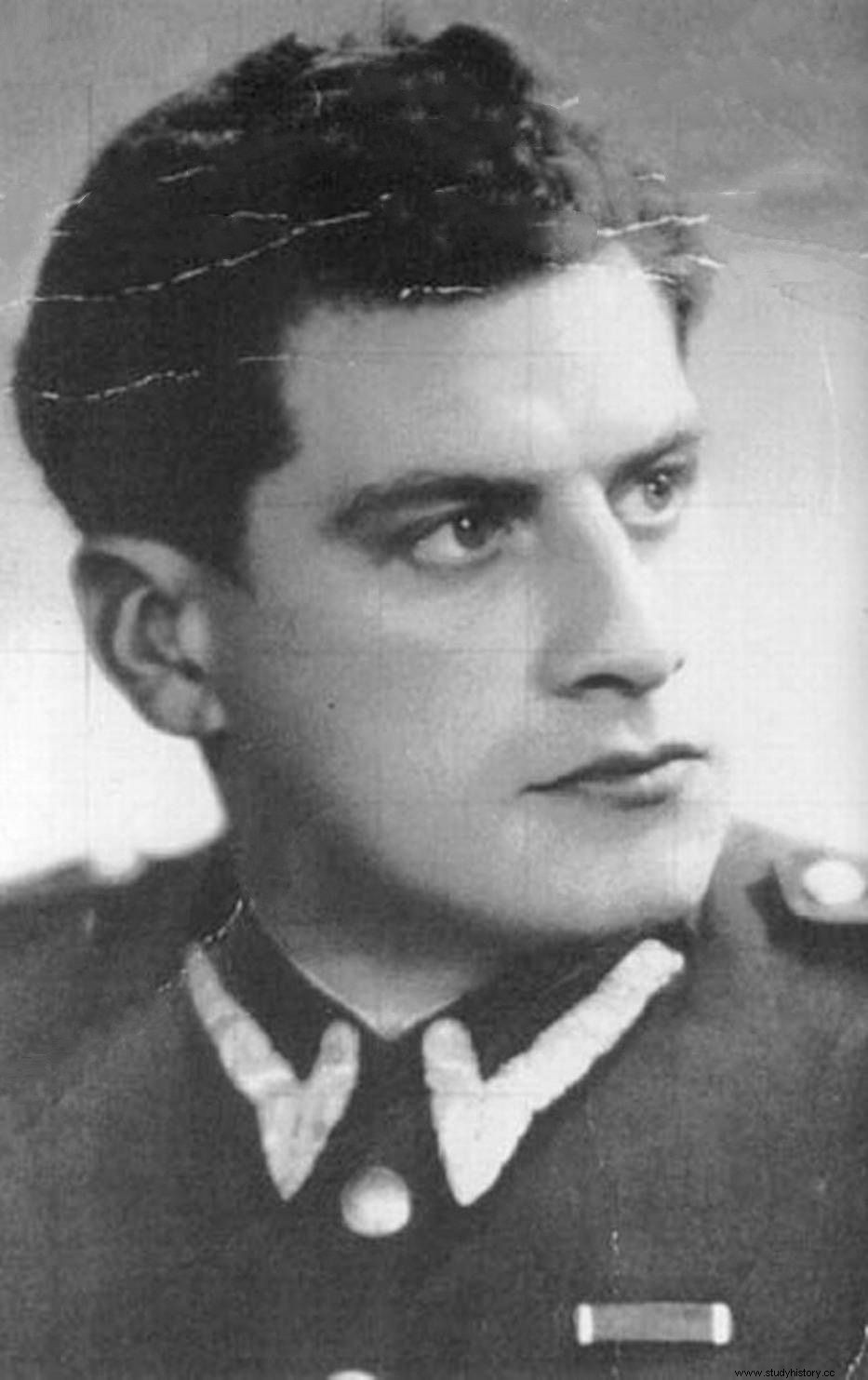
Solomon Morel never achieved justice. He calmly lived to see his days in Israel, and the country never agreed to his extradition to Poland (photo:public domain)
Salomon Morel willingly personally participated in the torture of the prisoners. They were beaten with a fist, a rubber truncheon, and a heavy stool. Prisoners were forced to lie down on the ground, and then the guards trampled on them in a whole group. People imprisoned in the camp and tormented every day became like animals. When someone in front of the barracks fell to the ground and began to die, they rushed towards it. No, not to help, but to strip the dying man's clothes as soon as possible.
In this context, it seems surreal that each day in the (communist!) Camp began with a prayer at the command "For prayer". Then a religious song was sung, while the same guards who had drunk, tortured and raped the previous day, humbly clasped their caps in their hands.
The end of the nightmare of prisoners in Stalinist camps in Poland did not begin until 1953 with the death of Josif Wissarionowicz. A few months after his death, Beria announced that he was going to end the forced labor system in Russia. In Poland, on August 8, 1953, an authority was established to control the prison system. After a month, the Prosecutor General issued an order for the early release of detainees by a special committee.
Soon the communist camps began to empty and their fate was sealed. Only physically and mentally damaged prisoners were unable to seek justice. If they wanted to live, they had to remain silent. Torturers like Gęborski or Morel escaped responsibility.
You will learn more terrifying stories about the fate of the prisoners of the gulag on the Wiła in the book by Bogusław Kopka.
Information sources:
- Dziurok A., For Germanness, for Volksliste, for nothing. A labor camp in Świętochłowice, "Bulletin of the Institute of National Remembrance" No. 9/2001.
- Kopka B., Gulag on the Vistula. Communist labor camps in Poland 1944-1956, Wydawnictwo Literackie 2019 .
- Łuszczyna M., Little crime. Polish concentration camps, Znak Horyzont 2017.
- Pollock S.E., Post-war Polish concentration camps, Silesia-schlesien.com [accessed May 20, 2019].
- Tochman K.A., Nowiny-Błudek communist labor camp in the Zamość region (1944-1945), "Represko apparatus in People's Poland 1944-1989, no. 1 (11) / 2013.
Check where to buy the 'Gulag on the Vistula. Communist labor camps in Poland 1944-1956 ”:
